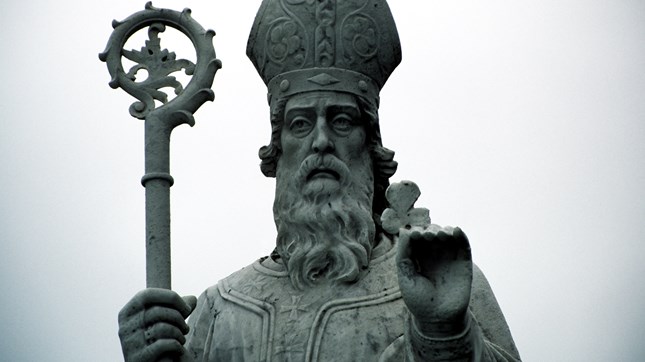Skill Builders
Article
Why and How to Preach about St. Patrick this St. Patrick’s Day

Editor’s Note: This article originally appeared on Anglican Pastor.
The pub nearest me has festooned itself with green, orange, and white bunting. My doctor’s waiting room is plastered with cardboard shamrocks that say LUCKY. McDonald’s has brought back (for a limited time) its Shamrock Shake.
Yes, my friends, it’s almost St. Patrick’s Day, and since this year [2019] it falls on a Sunday, we might consider, “Should we preach about the saint, and if so, how?”
Why preach on St. Patrick?
Here are 3 reasons why you should consider preaching about St. Patrick on St. Patrick’s Day.
Name recognition
We Anglicans observe a Christian calendar laden with saints, like Perpetua and Polycarp. But none of those gets parades in New York, Boston, and Chicago. Cyprian does not get a special shake at McDonald’s.
So, when I stand to preach on St. Patrick, I get immediate connection and interest.
Connections to our world
Every saint’s life is “profitable for instruction,” but Patrick’s connects to issues we struggle with today, like human trafficking. When Patrick was 16, he was kidnapped, taken to a foreign country, and forced into slavery.
Or dealing with violence. While Patrick was baptizing new converts, a tribal chief (think “gang leader in a rural setting”) sent soldiers who killed some and kidnapped the rest. Patrick complains, “The newly baptized and anointed were dressed in white robes; the anointing was still to be seen clearly on their foreheads when they were cruelly slain and sacrificed by the sword.” The waters of baptism ran with blood.
Preachable themes
Want to preach on missions?
Or on answering God’s call, no matter how difficult?
Or on how God can use someone even with limited education and a sinful past?
It would be hard to find a more compelling illustration than Patrick.
How to preach about St. Patrick
Here are 3 ways to prepare to preach about St. Patrick this St. Patrick’s Day.
Read the historical documents
Many writings, prayers, and songs get attributed to Patrick, but we have only two short documents that we know are his. You can read both in about half an hour:
Patrick’s “Confession” (or Confessio): When he had to defend himself against criticism for some (unknown) sin in his youth and for his lack of education.
His “Letter to the Soldiers of Coroticus”: His protest for the senseless killings I mentioned above, and his demand that the people kidnapped be released.
Separate the fact from fiction
No, Patrick didn’t teach about the Trinity using a shamrock. He didn’t drive the snakes from Ireland, either.
Here’s a super-quick summary and slightly longer one.
Tell the story
Teenager kidnapped. Taken to a foreign country and forced into slavery feeding pigs. Receives a word from God that “your ship is waiting for you” and escapes and boards a ship for France.
After many years finally makes it back home to Britain, only to receive a dream from God in which the Irish people “cried out as with one voice, ‘We appeal to you, holy servant boy, to come and walk among us.’”
What will Patrick do? Will he obey the voice of God, when it means going back to the violent land of his slavery?
I found this story so moving that one St. Patrick’s Day I preached a first-person sermon: I simply spoke as Patrick and told my story. (Yet another reason to own an alb.) But you don’t have to preach a first-person sermon to let the story come through.
So, take a closer look at St. Patrick as you preach the gospel this St. Patrick’s Day!
Kevin Miller is pastor of Church of the Savior in Wheaton, Illinois,











